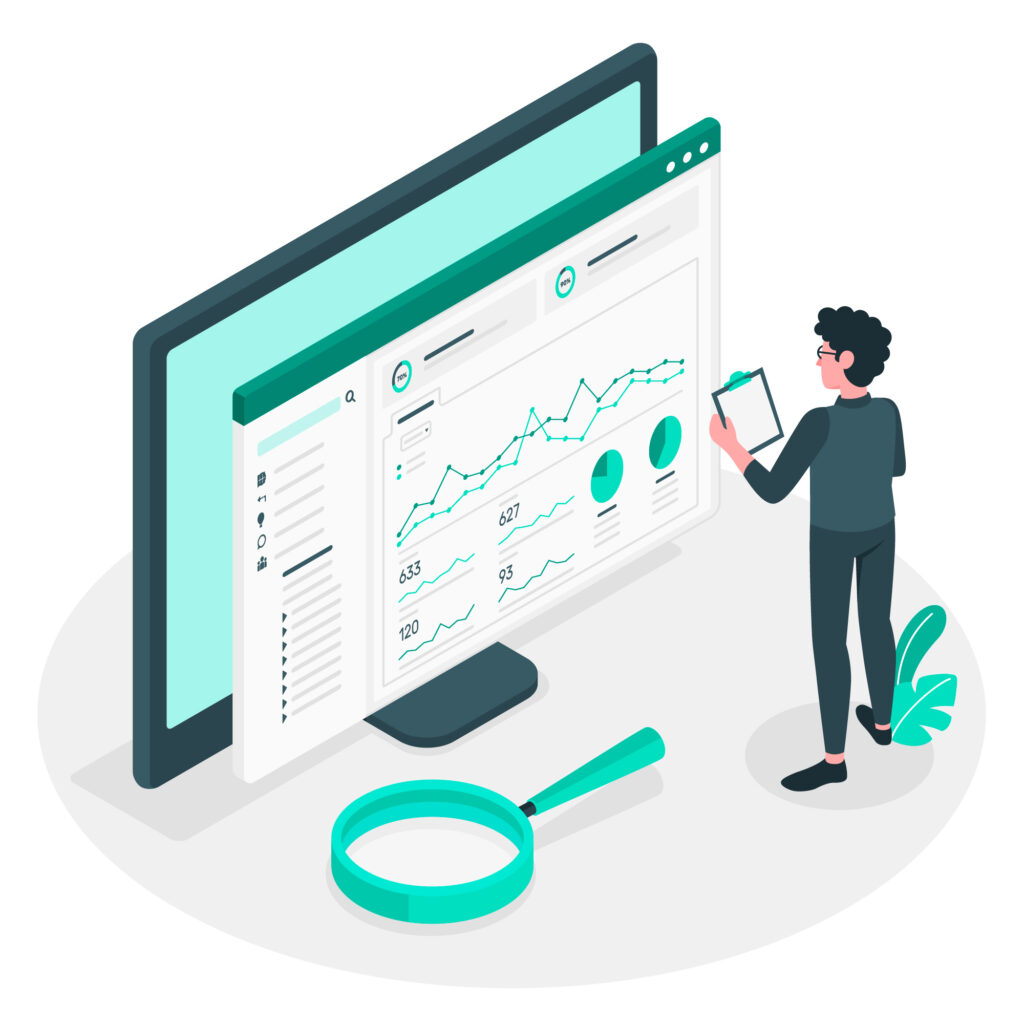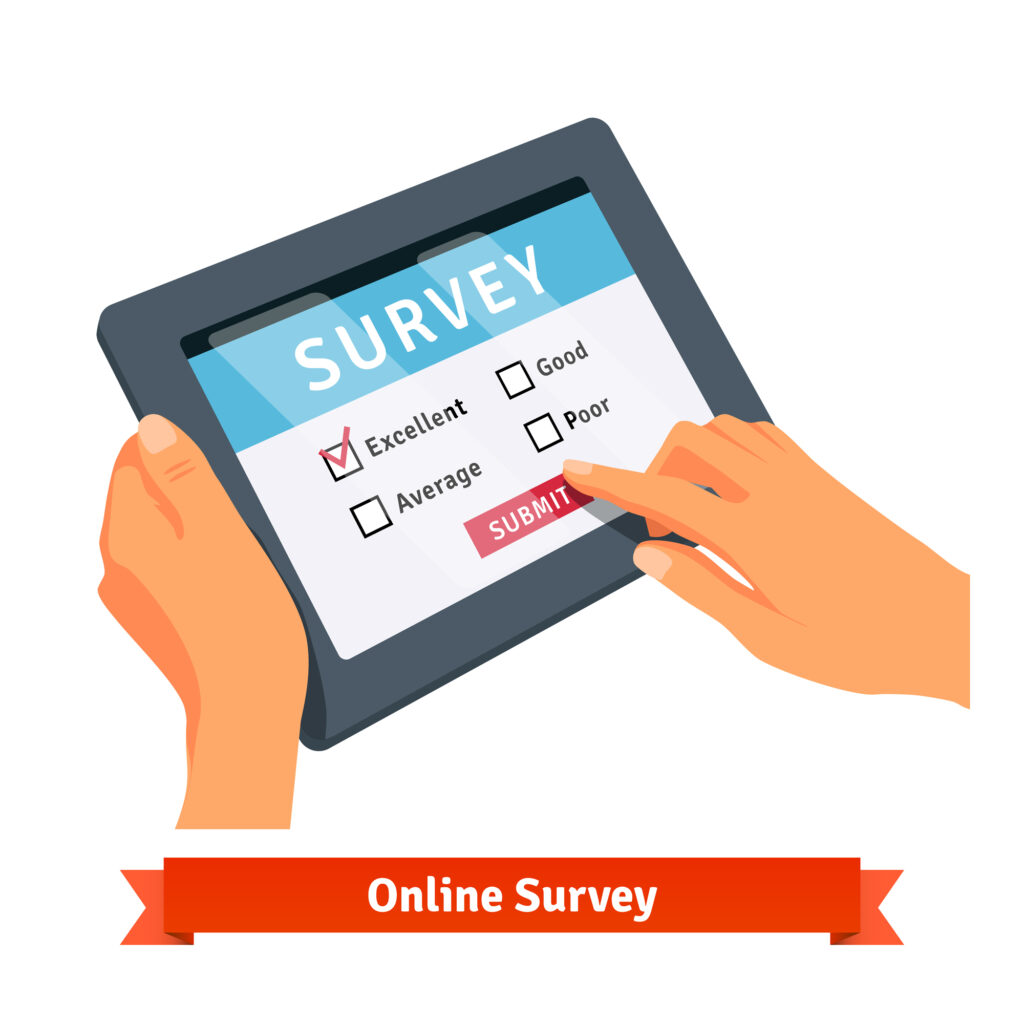As an online entrepreneur who wants to invest time and effort into CRO, one of your main goals will be to end up with digestive chunks of data. For example, Google Analytics is a popular tool that can reveal a lot of website flaws by breaking down the data it collected.
By taking a look at the result, you can identify certain trends, although you still won’t be sure about the behavioral patterns that cause them. In order to understand your audience better, you need to start distinguishing between Quantitative and Qualitative data and use them to your advantage.
This will be one of the most important rules in your CRO testing playbook. In this article, we are going to explore the difference between Quantitative and Qualitative data together. We are going to bring up common scenarios to show you which one is better in each case.
Are you ready to improve your CRO testing strategy? Let’s understand these two concepts in great depths so that you can walk away with some serious tools in your repertoire!
Table of Contents
The Difference between Quantitative and Qualitative Data
Quantitative and qualitative data are basically the two pillars of Conversion Rate Optimization. The quantitative part of it is all about laying down the numbers and analyzing them based on context. For example, the number of people that visit your website over time is one of the important metrics.

You can also measure how much time they spend on your website, which is another number. However, quantitative data simply can’t show us the reasons that lead to those numbers. That is where qualitative data enters the picture.
It is all about identifying and understanding the behavioral patterns of your visitors. Such information can be connected easily just like quantitative data. A straightforward method to collect qualitative data is to run a survey.
Ask the opinion of your customers and you are going to end up with plenty of valuable thoughts on what needs to be improved. Your website has a certain feel to it and a layout that compels visitors to use it in certain ways.
Since you look at your own website from the creator’s perspective, it would be really hard to understand their experience without testing, if not impossible. What you need to do instead is to start collecting both qualitative and quantitative data and draw conclusions from the mix of the two.
Identify the whys and reveal those numbers so that you can make informed decisions that will help you change your site for the better!
These are the Metrics that Quantitative Data Can Reveal
Depending on your goals, you can sometimes rely solely on quantitative data. When you need some quick facts about your website, then quantitative research is what you should conduct. It is a great way to check on certain stats on a regular basis such as the bounce rates of your pages.

Revealing the pages that perform the worst is going to be the first step towards improving your site. Once you look at those pages, you might already come up with some ideas on how to improve it. That is when you can start with A/B testing and let those different versions sit there for a while.
It is also important to notice the difference between the numbers. While some of your pages might have a conversion rate of 5-10%, it really does not matter that much if those have only 100-200 visitors. Instead, you probably should work on that page that gets 2-3000 visitors and has a 3% conversion rate.
Also, make sure to distinguish between desktop and mobile traffic. This can give you a great idea about which one to optimize first. Maybe what your website needs is some optimization on the mobile side in order to achieve great results.
After all, developing a great design for desktop users is not the same as developing one for smartphone users. The latter are much more impatient and want you to get to the point faster.
Here is How You Should Interpret Qualitative Data
It is crucial to take a look at qualitative data when you want to decipher the motivation behind the actions of your visitors. If you take a look at the numbers, you can immediately see whether your bounce rates have increased or not.
Then, the question is: What are the actions that led to that increase? The next step there is to perform qualitative research and find out more about the things that bother people about your site. For example, it is probably not appropriate to ask for their personal information right when they land on your site.
Or maybe you have focused too much on trying to sell your products instead of publishing quality content. After all, one sure way to drive people away is to saturate your content with high-pressure sales language. Revealing such information is going to help you a lot when it comes to developing a CRO strategy that actually works.
You can also learn a lot about how people interact with your website. With a web analytics tool called heat map, you can end up with an on-point representation of user behavior. You can see exactly where they click, how they scroll and where they drag their mouse.
As a result, you will know exactly how to change your website layout so that your viewers end up focusing on the areas you want them to. If your call-to-action is at the bottom of the page, a scroll heatmap can reveal if most people didn’t even scroll down to see it.
In that case, you can either identify a more popular spot for that CTA or change your content so that readers actually read it to the end.
How to Start Harvesting Quantitative Data?
There are various methods and tools which can lead you to the valuable quantitative data you need. We can say it without any doubt that CRO can’t exist without such data. As an online entrepreneur, you should always look at the numbers even if you are a complete beginner.

You will eventually get used to it (and with proper research) you are going to be able to muster some real value out of it as well. Now, let’s see the main methods you can use for quantitative research:
1. Conduct a Technical Analysis
For most online entrepreneurs out there, the one and only most important tool to rely on is Google Analytics. If you are familiar with SEO, then you definitely know a thing or two about this tool. Google Analytics is all about quantitative data and you can use it to identify the most pressing site issues.
It is literally the key to improve the overall user experience on your website. You might find pages that are particularly slow and need some optimization. HD photos are fine as long as they are not too big, as loading time is one of the most important metrics that is going to affect your CRO.
All the stats you see there can be categorized for different devices such as Android, Apple, desktop and such. You can also take a look at the numbers for each and every browser and the different versions of each. Technical analysis is about identifying high bounce rates in these categories.
Then, you will end up with a list of web pages that you need to work on.
2. Digital Analytics with Tracking Codes
This is another method that is going to require you to open up Google Analytics, although there are numerous similar website analytics tools that can work as well. Since this one is the most familiar for website owners, we are going to use it as an example again.
The goal with digital analytics is to focus on the metrics that matter in order to identify the most important areas of any given web page. First off, the web pages you want to analyze need to be tracked. Google Analytics allows you to use tracking codes on your pages.
Now, analyzing the right data is very important so make sure not to set up a tracking code for metrics that don’t even matter. For example, it is pointless to track Time on Page because it requires a first and a last interaction in order to measure how much time visitors spent on the page.
Many times, there is no second interaction, in which case the result is going to be 0 seconds. Ask yourself this question: What are the most important actions I want my audience to perform on my site? Is there a lead form you want them to fill out?
Or, in case you own an e-commerce website, then the number of users completing a purchase is definitely a metric you should investigate. To be precise, we are talking about money leaks here and the sooner you fix them, the higher your revenue is going to be.
If you have a sticky bar on one of your pages that performs particularly well when it comes to generating leads, you might want to try it out on other pages. Or, maybe some of your products cause your visitors to abandon their carts. What is the problem there?
The good thing is that there are numbers behind these issues and you can reveal them with ease using Google Analytics.
The Best Methods for Collecting Qualitative Data
While Google Analytics can help you a lot, there is really no way to find that valuable qualitative data there. You need to turn to other tools and methods in order to understand your audience better. Below, we are going to show you the best ways to gather quantitative data and gain the insights that will drive your business to success.
Eliminating user confusion is very important, as your website has to be structured in a way so that it is straightforward to use for most people. Quantitative data can also shed light on certain functionalities on your website.
Let’s say that many visitors leave right after conducting a search using a few keywords. After revealing such information, you might come to the conclusion that your on-page search engine is not reliable. It simply does not return the content that users are looking for.
After an easy fix, you can guarantee a much better user experience for your customers. The point is to keep them engaged and to ensure a seamless experience.
1. It is Time to talk with the Customer Service Team
If you have a customer support team, then you already have some valuable information at hand. All you need to do is to ask them the right questions and you will end up learning a lot about your customers. After all, the job of your customer service team is to speak with customers.
Therefore, they get a lot of feedback from them that are ready to be shared with you. Never underestimate the insights that your audience can have about your website. You might stumble upon some incredibly valuable feedback that can set your site up for success.
2. Ask for Feedback Directly from Your Customers
Don’t shy away from starting a one-on-one conversation with your customer. Reach out directly in any way you can, be it via email, phone or in person. This way, you can not only make them feel special but also end up with some surprisingly valuable insights.
Look for that single complaint that can help you develop a core understanding about how to improve your website. You can even go a step further and find someone who is willing to talk with customers in their native language. It is also a way to build up trust and grow your base of loyal customers.
3. Ask Questions via Surveys
Why not create a survey that contains all the important questions you want to ask to your customers? There are plenty of tools that can help you create thorough surveys. Your customers can’t wait to share their qualitative insight, you only need to provide a platform to them where they can do it.

With those insights at hand, you are going to be able to perform some high-level CRO testing. Here are the main questions you should ask:
- How did you find out about our products/services?
- Did you find the solution you were looking for on our website?
- Do you have any suggestions how could we improve our products/content/website?
It really depends on the situation whether you want to write it in an indirect or direct way. You can take the opportunity to strike up a conversation with your visitors while they are exploring your site. Or, you can also exit surveys and offer a gift card or discount for completing it.
This will all come naturally once you get to know your customers better.
4. Tools, Tools and More Tools
There is really an arsenal of web analytics tools that are available online. For example, heatmaps can help you understand user behavior on a much deeper level than most other tools out there. The visual representation you get is going to show where your users prefer to click the most and how much they care about your content.
Identify the hot spots of your web pages and those areas that don’t get any attention from your audience. It opens you the door to scrolling habits, smartphone user experience and browsing habits overall. Screen replay tools are also rather beneficial, as you can take a look at the whole user journey via video recordings.
Such recordings help you understand what users do on your site, where they click, where they land and where they leave your site. If there is any specific information you need, then you can freely tailor these tools to your needs. There are many high-end tools that are customizable in many ways, allowing you to collect the information you want.
Final Thoughts
We can conclude that quantitative data is mainly about monitoring activity on your website. Qualitative data, on the other hand, can help you understand why certain activities are happening on your website. By using tools for qualitative research, you can take a look at your own website through the customer’s eyes.
Once you are able to use all the tools and methods that we talked about in this article, you will be able to harvest an incredible amount of valuable data. Then, the brainstorming can begin and you can continue with some A/B testing until you find out what works best.
All this with the main goal to increase your conversion rate and build trust with your audience. Meanwhile, you should always keep in mind that it’s not all about selling. Online marketing is rather about understanding your customers and figuring out what they need.
Qualitative and quantitative data are the two essential concepts you need for conversion rate optimization. Now that you have a better understanding of both, you can start experimenting with them a little bit and reveal the first improvement that has to be made on your website.
Don't forget, sharing is caring! :)


1 Comment
Ana Carol
2023-06-13 at 01:50Excellent article, thank you for highlighting the importance of utilizing both quantitative and qualitative data in CRO. It’s crucial to gather digestible chunks of data through tools like Google Analytics, but understanding the behavioral patterns behind the numbers is equally vital. Quantitative data provides valuable metrics and insights, while qualitative data helps decipher the motivations and preferences of your audience. By combining both types of data, you can make informed decisions and develop a comprehensive CRO strategy. Keep up the great work in promoting the synergy between quantitative and qualitative research for CRO success!